Hydraulic compression fittings explained. Read our take after 30 years of using single and double ferrule fittings.
Before you start. Rigid pipe or hoses?
If you want a permanent installation and a neat job, piping it up with tube and compression fittings will give you a “better job.” Debatable? Yes, hoses have a big place even in a piped- up system, but we always think that pipe is plan A. The moment that vibration, “mobile”, serviceability or misalignment come into a design, then look to hoses. Or a mix.
Single ferrule or double/twin/two ferrule type?
For double ferrule compression fittings, read twin ferrule compression fittings or even two ferrule hydraulic compression fittings. Different manufacturers call them different names. If compression fittings generally fall into single ferrule or twin ferrule types, then which do you go for? Both types deform a ferrule to clamp a tube as it is forced into a taper by the action of the hexagon nut being tightened. To quote the Swagelok catalogue word for word, “the two ferrules separate sealing and tube gripping functions; each ferrule is optimized for its function. The front ferrule creates a seal against the fitting body and on the tubing outside diameter. As the nut is turned, the back ferrule axially advances the front ferrule and radially applies an effective tube grip.” Thank you, Swagelok.
Eaton/Walterscheid DIN 2353 Single Ferrule fitting. Note the single ferrule clamping the tube. Image by courtesy of Eaton Corporation
Swagelok Double, twin or two Ferrule fitting. Note the inner and outer ferrules. Orientate them correctly or it won’t work. Image by courtesy of Swagelok
The diagrams show the two types. The single ferrule or front and rear ferrules are clear.
Single Ferrule in carbon steel is a good choice for oil service.
That is our preferred option. For oil based systems using steel components, we have always been great fans of Walterscheid (now Eaton), although for complicated commercial reasons, we are now using quite a few Voss parts. We have a very long relationship with Stauff, who we like. In steel, these DIN2353 metric compression fittings are dramatically cheap. These will be best on metric tubing in Europe. Although the fittings and tube may be inexpensive, the labour in bending up and piping a system can be considerable. Yes, getting tubes cnc bent if you are doing runs will cut the time dramatically, but you are still talking time to install.
We are fans of Swagelok double ferrule fittings in stainless 316.
If Sarum Hydraulics has a lot of know-how in water, tricky fluids and high pressures, what do we use on stainless steel compression fittings? Metric single ferrule compression fittings are available in 316 stainless at reasonable prices, although over the years we have used very few. Have we missed a trick? We just use double ferrule compression fittings. Swagelok two ferrule compression fittings are our first port of call for all double ferrule requirements for any 316 stainless steel oil, water or other fluid hydraulic system. We have dealt with Swagelok Bristol for years. They are good. We like working with double ferrule fittings on equipment using our own Micropac stainless steel hand pumps. You can only speak as you find. Over the years, we have achieved incredibly high reliability and the product is a joy to work with if you take pipe work seriously.
Pictured above a Micropac 316 stainless pump piped with Swagelok and to be installed on a lighthouse. Being pounded by the Atlantic 365 days per year!
8 ways of making life easy when you use Swagelok or double ferrule fittings.
Buy spare fittings or at least nut and ferrule sets. Not doing so is a disaster, as the job could grind to a halt.
Don’t lose the ferrules. Always make sure the nut is screwed on to the fitting before handling it. If it falls off, the twin ferrules are easy to lose. Always make sure that the inner and outer ferrule are present in the fitting and correctly orientated before piping. Get into the habit of always checking this.
Pre-installation is good. Robert here always pre-installs all nuts before doing the final fit on the pipes. Good practice, we think. Swagelok has a lovely “feel” as the nut is installed.
Don’t mix metric and imperial sizes, or at least we don’t. We only use imperial Swagelok double ferrule on our designs because of the offshore and aerospace roots of the business. Stock should all be labelled up and stored properly, anyway. Although Swagelok do a big range of metric, I think it is still fair to say that the imperial range is a little larger because of the American origins.
Don’t mix ranges. We just use Swagelok. We are sure that Parker A lok is just as good but don’t think we would expect to see a mix on a job let alone people mixing up fitting bodies, nuts and ferrules on the same connection. Of course, you might be using some Parker Instrumentation series valves terminating in double ferrule so you would have a limited mix. That said, most of our needle valves, ball valves, check valves and relief valves tend to be Swagelok as well. Parker are also very good from Fluid Controls or Hydrasun.
Weird fittings are bad news. Be a little careful about picking a really oddball fitting and finding that it is on long lead time. One of our customers uses 1/8npt to 12mm male stud and needless to say, it is to special order.
What is an equivalent? Don’t buy in cheap and be told that all twin ferrule fittings are the same. We wouldn’t risk it. “Swagelok” isn’t a generic name for all double ferrule fittings, whatever a rep tells you. We are told that there is some rubbish in the market place. Buying cheap copies could be very high risk.
Would you be brave enough to not pressure test? No, we don’t think so. You are very unlikely to get a leak, but you would not risk it. Bubble testing on air is a start then a proper proof test using a Micropac pressure test pump. It’s what we do.
Cutting the cost using clever design. Yes, double ferrule fittings are expensive and you will find that the cost of the fittings alone soon clocks up on a job. So what do you do?
–Simplify the design. Try to simplify the design as much as possible. We think that using lots of tees and crosses will rack up the cost and is most frustrating when you come to pipe up. With a little quiet thought previously, you might have cut the number of fittings by 50%. It is worth thinking it through for a few minutes.
–Think manifold. Because we are manifold block people, we wouldn’t hesitate to make up a manifold if it simplifies a circuit. You would probably do it to bring more to the party than just saving a few fittings, but the results can be dramatic. Once we start seeing crosses in a circuit, we look whether a single manifold can really pay dividends. You can extend this to integrating some circuit components. Our pumps are manifold block based, so we might include extra pressure, tank or gauge ports very easily which eliminates fittings and pipe work. Make a longer manifold block and share a couple of awkward features in one block. The customer might have additional needle valves, check valves or relief valves downstream and we might integrate stainless cartridge valves from our local BIS Valves or Bifold into the pump body. Like everything, it is a numbers game and the biggest savings will be on numbers of systems.
–Don’t try the impossible on your space envelope. Piping up anything in a ridiculously tight envelope will be a nightmare, especially if you can’t actually spring pipes into fittings. Real pros will pipe up for easy fitting of pipes, so the assemblies just slide or spring into place. Clearly, if you are trying to spring a very tight elbow between two compression fittings at 90 degrees, that verges on impossible. This applies to single or double ferrule.
–Buy decent bending tools. What have we learnt on pipes themselves? We have always been great fans of Ridgid bending tools. They make a nice job of bends. Deburring tools clean up the ends nicely.
Buy decent tube. Is all 316 stainless steel tube the same? We don’t think so. We have had odd tube from the Far East that has not bent very nicely at all so consequently stick to European now. Sad!
Clean the tubes. Finally, clean the tube assemblies before fitting. As well as blowing them out, we would wash through with solvent onto a cleanroom wipe or ultrasonically clean them.
Anyway, that is what we have learnt. As always, feel free to correct us on anything.
Useful Links:
Eaton/Walterscheid single compression
Bifold valves in 316 stainless

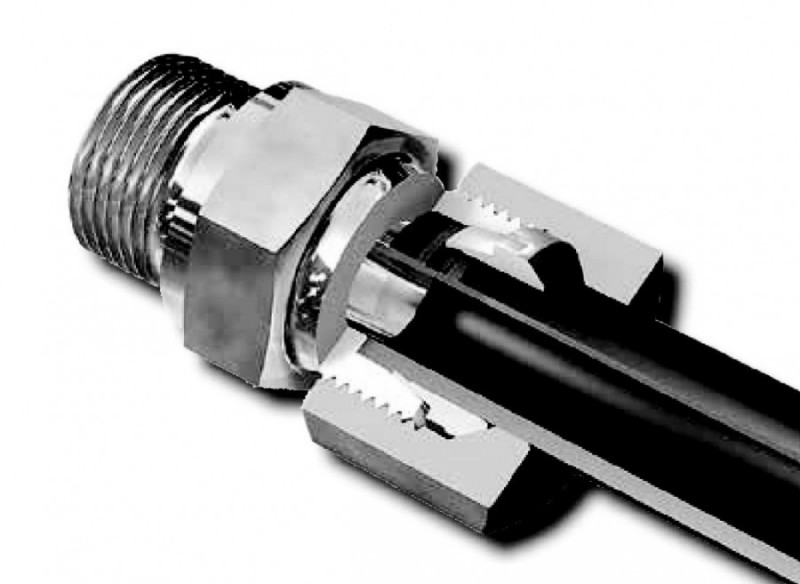
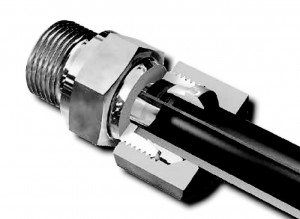
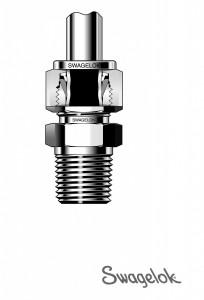
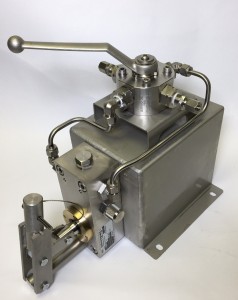

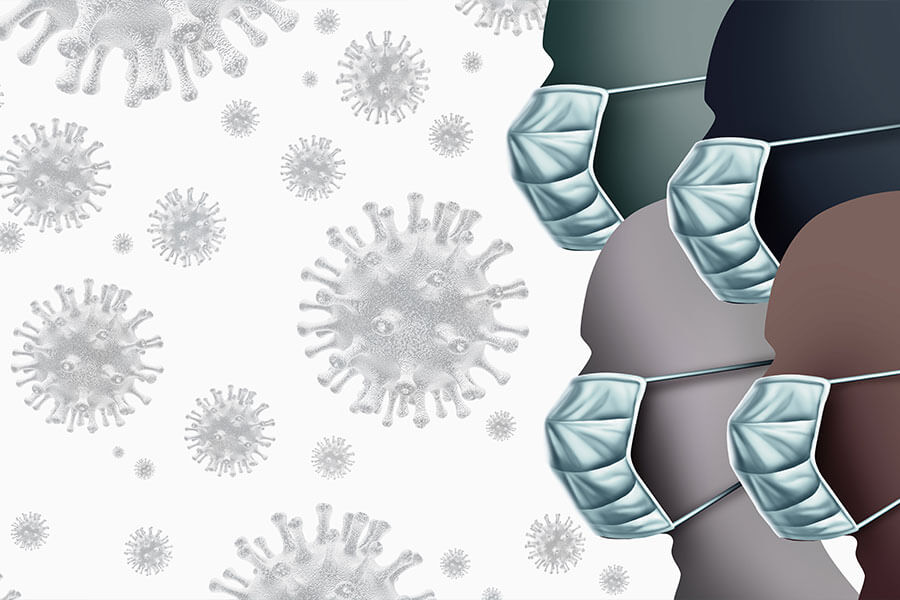

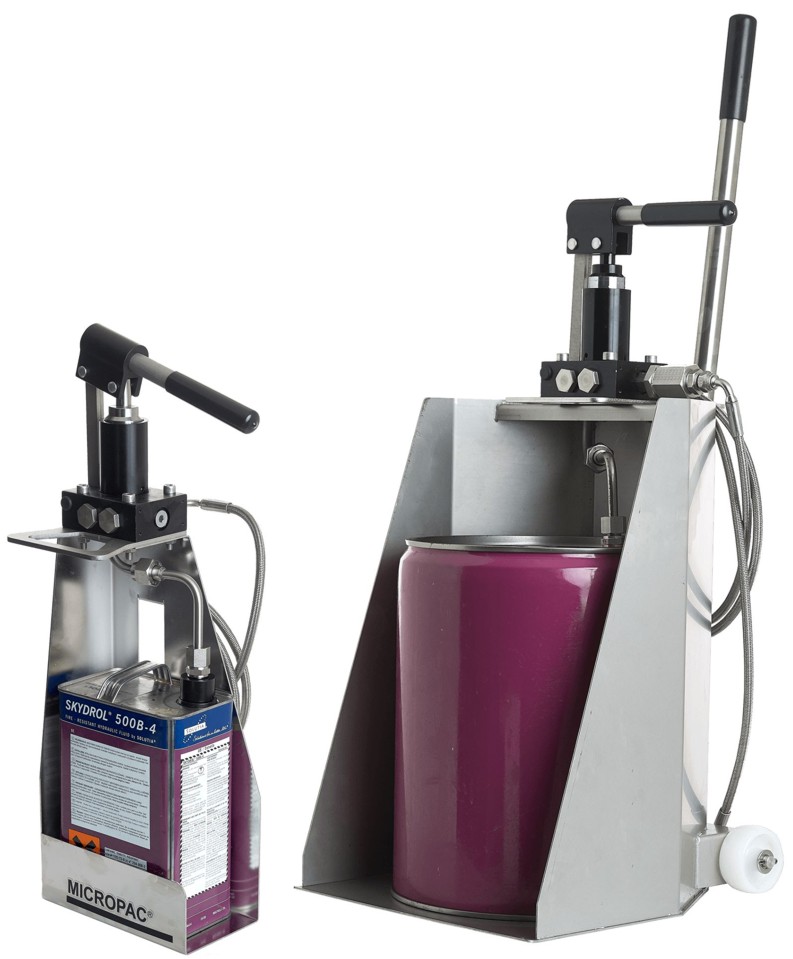
Superb blog to read really helpful information given keep sharing more thanks for it
Sonal Kumar, Thank you so much for reading our blog on single & double ferrule fittings and enjoying it. Wishing you success with any systems that you design or manufacture.
Good blog.. very informative